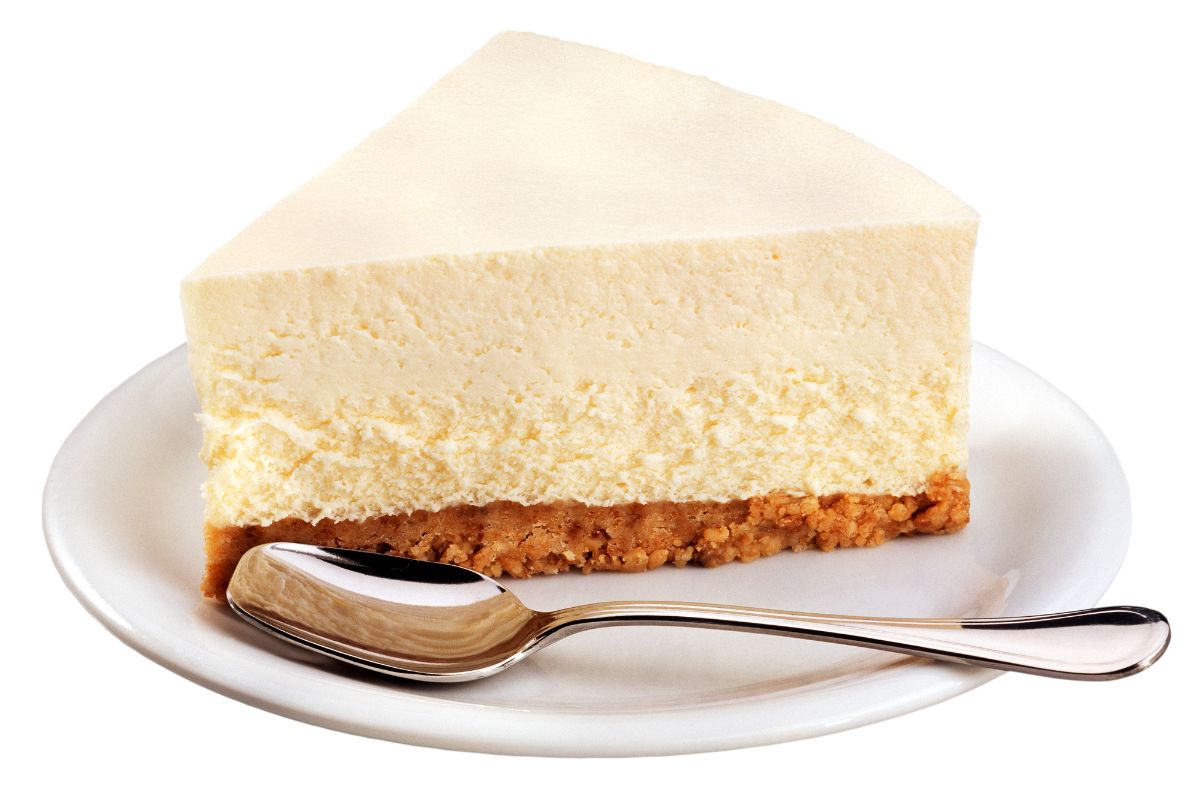When it comes to making the most amazing cheesecake, we must remember to get everything right. None of us want to end up with a curdled cheesecake!
With ingredients such as whipped cream, no fat cream cheese, sour cream or other dairy products, it perhaps comes as no surprise that it’s pretty easy to end up with a curdled cheesecake.
But why exactly did your cheesecake curdle? What happened for the cheesecake mixtures to become so ruined?
We’ve written this handy guide to try to explain everything you need to know. So, if you want to perfect your dessert and avoid ending up with a curdled cheesecake, then read on and find out more!
The Causes Of A Cheesecake Curdle
Curdling can occur with mostly any dairy product. This is of course prominent when it comes to something like cheesecake mixtures.
However, one of the most common reasons for a cheesecake to end up curdling is because of temperature. Curdling can occur when the cheesecake has been left in the oven for too long or if it is actually baked at a higher temperature than it should be.
Indeed, oven temperature is a critical factor to get right when making the perfect baked cheesecake. It’s much easier to prevent curdling than trying to fix curdled cheesecake, so try to follow the instructions as closely as possible.
In fact, that’s the second reason why people may find their cheesecake curdle – not following the instructions as closely as they should. Things as simple as the wrong measurements or, as mentioned, the wrong oven temperature can ruin the cheesecake mixture.
Preventing Cheesecake Curdle
When you’re in the preparation process, there are some things you can do to avoid your cheesecake mixture becoming curdled.
The first thing you need to do is familiarize yourself with the entire recipe and the process. If there are any terms or ingredients you are not sure of, find out what they all mean before you continue.
Yes, as cheesecake mixture can be ruined very easily – having a full understanding over the cheesecake recipe can be worth its weight in gold.
Be sure that you measure accurately. If you’re ever unsure, you should use measuring cups and measuring spoons to get you as close as you possibly can be.
Other than this, one of the other very common mistakes you could see with bakers is using the wrong type of cream cheese. Cream cheese is of course critical with a cheesecake, but it’s the selection of the right cream cheese that is more important.
Indeed, a very common thing to see here is people who use low fat cream cheese or a cream cheese substitute because they are on a diet, or looking to reduce the amount of calories in the dessert.
The fact is though, as cream cheese is so important – you must get it right. Using the wrong cream cheese (especially with the fat content) can alter the chemical reactions throughout the process.
If you are looking to reduce the amount of sugar or fat within your cheesecake, do not compromise with the cream cheese. As we mentioned, cream cheese is the most important factor when it comes to curdling.
Instead of adapting the cream cheese, choose to substitute one of the other ingredients for a low-fat option.

Equipment And Method
When it comes to the prevention of your cheesecake curdling (because we don’t want to fix curdled cheesecake!), we need to ensure that we’re using the right equipment and getting the method correct.
Now, while it is true that the cream cheese is perhaps the primary factor in a cheesecake mixture curdling, the method and equipment we use is going to play a major role.
You want to remember to use a metallic cake pan, as opposed to glass. This is because it makes it much less likely for your cream cheese to go bad during the cooking process.
Typically, a cheesecake recipe will tell you to use softened or room temperature ingredients. So, to get these room temperature ingredients to the right place – you should allow some time.
One hour is totally fine for butter but you’re going to need to allow about 45 minutes for cream cheese. Try not to let cream cheese sit at room temperature for any longer than this.
When mixing your ingredients, make sure you are not over mixing. Many people think that this will help, but in reality, it can cause things like cream cheese to quickly go bad. The reason for this is because of too much air.
Baking
Obviously, you will want to prevent curdling throughout – so this is no exception when it comes to the baking process. If you are using a cheesecake pan, you will be fine to put the cheesecake into the oven at a temperature of no more than 325 degrees Fahrenheit.
Going above or below this can lead to ingredients like cream cheese becoming curdled – and as we mentioned earlier, the cream cheese going bad is going to be one of the biggest factors towards your mixture being ruined.
If you need to, you can adjust oven temperature based on whatever the recipe commands. For example, if the recipe says you need to gently heat – then you can gently heat. Just be careful with it.
If you are wondering how you can accurately measure the heat of the oven – then you should pick up an oven thermometer which makes all the difference. An oven thermometer can quickly tell you the oven’s heat.
It doesn’t matter if you have an electric oven or a gas oven – the tool can provide accurate information for both.
Don’t be tempted to open the oven during the baking process. To bake correctly and get the perfect cheesecake, you need to allow the entire baking process to occur and trap the heat. Don’t allow cold air to cause cold ingredients.
Remember, it’s easier to prevent cheesecakes becoming curdled than it is to fix curdled results. This is especially true for things like cream cheese frosting and cheesecake batter. Curdled cream cheese and ruined cheesecake batter are actually impossible to fix.
Speaking of curdled cream cheese, if you do notice this happening during or after the baking process, you need to ensure that you throw it out. Curdled cream cheese can make you sick if you eat it.
This is because curdled cream cheese will have plenty of active bacteria and your stomach will not agree with it! The same applies to cheesecake batter.
Cooling
Be sure that when you bake cheesecake, you allow for the finished produce to cool slowly. Any sudden temperature change when making cheesecake can ruin the whole thing and cause cheesecake ingredients to clump together – and not just a tiny bit either!
Place your cheesecake on a wire rack allowing the cheesecake to breathe. Then, refrigerate the cheesecake overnight prior to serving it.
If you have been using a gas oven, you will likely see the room temperature, and indeed the cheesecake cooling process quickly drops when compared with electric ovens. This is because electric ovens tend to trap heat for longer after being switched off.
Final Thoughts
Nobody wants to ruin their cheesecake mixture, so by following these steps and understanding why it occurs, we can work towards prevention – rather than fixing a ruined mixture!










